
February 19
1913 Birth: Artur Axmann: Reich Youth Leader from 1941 to 1945:
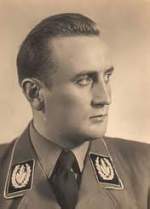
Prior to replacing Baldur von Schirach, he will serve on the Western Front and leave an arm behind for his trouble. One of the die-hards during the last days in the Fuehrerbunker, he will later claim to have heard the shot that killed Hitler (unlikely) and will be a witness to Martin Bormann's body lying on a bridge during the breakout; arrested for organizing a Nazi underground in December of 1945, labeled a 'Major Offender' in May 1949, and sentenced to three years and three months incarceration and loss of 50% of his financial assets. He will eventually be found not guilty of any actual crimes; the court will conclude that he had been a Nazi from "inner conviction rather than base motives.
1915 World War I: Allied navies bombard Dardanelles:
On this day in 1915, British and French battleships launch a massive attack on Turkish positions at Cape Helles and Kum Kaleh at the entrance to the Dardanelles, the narrow strait separating Europe from Asia in northwestern Turkey and the only waterway linking the Mediterranean Sea to the Black Sea.
With Turkey's entrance into World War I in November 1914 on the side of the Central Powers, the Dardanelles were controlled by Germany and its allies, thus isolating the Russian navy from the Allied naval forces and preventing cooperation between the two, as well as blocking passage of Russian wheat and British arms back and forth. An attack on the Dardanelles was thus a key objective of the Allies from the beginning of the war.
The British, and especially Lord of the Admiralty Winston Churchill, became convinced that it was possible to win control of the strait by a purely naval attack, avoiding the diversion of soldiers from the battlegrounds on the Western Front. At the end of January 1915, the British War Office approved a plan to bombard the Turkish positions at the Dardanelles; the initial bombardments would make way, they hoped, for British forces to move on Constantinople, knock Turkey out of the war and open a path to Russia.
Churchill set the date for the attack as February 19; on that day, a combined British and French fleet commanded by Admiral Sackville Carden opened fire with long-range guns on the outer Turkish fortresses, Cape Helles and Kum Kaleh. The bombardments made little initial impact, however, as the Turks were not caught unawares: they had long known an attack on the Dardanelles was a strong possibility and had been well fortified by their German allies. (History.com)
1917 World War I: American troops are recalled from the Mexican border.
1918 USSR: A decree abolishing all private ownership of land, water and natural resources is issued by the Soviet Central Executive Committee.
1934 Zionism: The Youth Aliyah (immigration to Palestine) program begins operation in Germany. (THP)
1937 Ethiopia: An attempt to assassinate Italian Viceroy Rodolfo Graziani in Addis Ababa fails, triggering a brutal crackdown on Ethiopians over the following three days. [For further information, click here]
1938 The Soviet arctic ice research station North Pole 1, in Denmark, is evacuated. [See: War Below Zero.]
1940 World War II: Hitler receives a telegram informing him that the British have indeed captured Germany's invasion plans from a downed German plane and learned of his offensive in the west. This information is alleged to have originated with the Duke of Windsor. (See January 10) 1941 World War II: Various: Holocaust: From a German administrative document found in the archives of the Gau Administration of Strasbourg:
The Gauleiter desires that the Alsatian population be recommended by the organization of the Block- and Zellenleiter to rip up the French flags still in possession of the people and to use them in a suitable way for household needs. By the 1st of next May no French Rag should be in private hands. This goal should be attained in a way by which the Blockleiter are to visit each household and recommend the families to use the flags for household needs. It should also be pointed out that after the 1st of next May corresponding conclusions shall be drawn concerning the attitude of owners if, after this date, French flags are still found in private possession.
1942: Various: World War II: War with Japan: In its biggest attack since Pearl Harbor, a force of 130 Japanese aircraft bomb the northern Australian city of Darwin:
Darwin was a supply base and transit camp for troops, aircraft and ships moving north to the war. Defences for the town and harbour were minimal. When the first attacks came, those manning anti-aircraft artillery performed bravely, but they were too few in number to prevent massive damage being inflicted. At least 250 people were killed.
Holocaust: Josef Perau—a German military chaplain in Russia—writes of witnessing several hundred corpses being brought to a mass grave near his station every day, "the total number being already 19,000." (THP)
The motives of Catholic chaplains such as Josef Perau and Ernst Tewes were benign and their ideology differed greatly from the propaganda and vitriolic ideas espoused by Nazi leaders on issues such as the sub-humanity of Jews and Slavs, the morality and necessity of the conflict, and the resulting atrocities. Furthermore, the chaplains' actions and words within their narratives demonstrate that these Catholic chaplains were loyal first to the Church, second to the men they were ministering to, and third, if at all, to the Nazi state.
Vichy France:
General Gamelin, Leon Blum and Paul Reynaud are put on trial at Riom by the Vichy government, charged with being responsible for the French defeat of 1940.
When the Germans occupied France in June 1940, Blum made no effort to leave the country, despite the extreme danger he was in as a Jew and a socialist leader. He was arrested by the Vichy authorities in September and held until 1942, when he was put on trial in Riom on charges of treason, for having "weakened France's defenses." He used the courtroom to make a brilliant indictment of the French military and pro-German politicians like Pierre Laval. The trial was such an embarrassment to the Vichy regime that the Germans ordered it called off. In April 1943 the Germans deported Blum to Germany, where he was imprisoned in Buchenwald until April 1945' in the section reserved for high-ranking prisoners.
Roosevelt signs Executive Order 9066:
Ten weeks after the Japanese bombed Pearl Harbor, U.S. President Franklin D. Roosevelt signs Executive Order 9066, authorizing the removal of any or all people from military areas "as deemed necessary or desirable." The military in turn defined the entire West Coast, home to the majority of Americans of Japanese ancestry or citizenship, as a military area. By June, more than 110,000 Japanese Americans were relocated to remote internment camps built by the U.S. military in scattered locations around the country. For the next two and a half years, many of these Japanese Americans endured extremely difficult living conditions and poor treatment by their military guards.
On December 17, 1944, U.S. Major General Henry C. Pratt issued Public Proclamation No. 21, declaring that, effective January 2, 1945, Japanese-American "evacuees" from the West Coast could return to their homes. During the course of World War II, 10 Americans were convicted of spying for Japan, but not one of them was of Japanese ancestry. In 1988, President Ronald Reagan signed a bill to recompense each surviving internee with a tax-free check for $20,000 and an apology from the U.S. government. (History.com)
1943 Various: World War II: German tanks under Brigadier General Buelowius attack the Kasserine Pass, Tunisia:
Rommel probed the American lines, and concluded the Pass was the soft spot in the American lines. The next day, he personally led the attack that cracked the American defenses and sent them reeling back. Almost everything the Americans believed was wrong.
From notes of a meeting attended by Albert Speer, Fritz Sauckel, and Field Marshal Milch:
Sauckel: "If any prisoners are taken, they will be needed there." Milch: "We have made a request for an order that a certain percentage of men in the antiaircraft artillery must be Russians. Fifty thousand will be taken altogether, thirty thousand are already employed as gunners. It is an amusing thing that Russians must work the guns."
1944 World War II: Various: War in the Air: War in the Air:
The US 93rd Bomb Group sees action over Western Europe, North Africa, Italy and Rumania.
War in the Air: 823 British bombers attack Berlin.
War at Sea: German submarine U-264 is sunk off Ireland by depth charges from the British sloops HMS Woodpecker and HMS Starling. No casualties; 52 survivors.
1945 World War II: Various: Death: Wim Speelman: Dutch resistance fighter, executed at 26:
Speelman played an important role in the organisation of two illegal newspapers, Vrij Nederland and Trouw. The Sicherheitsdienst [German secret police] apparently knew his identity. In 1944, the SD promised to spare the lives of 23 Trouw employees who had been sentenced to death if Trouw ceased publication. Speelman only had to sign a note. It was a weighty decision. But, reasoned Speelman, if he gave in it would be a stab in the back of every Dutch person who had been incited to resistance by Trouw. 'Keep going,' he decided. The 23 death sentences were carried out. Six months later, Speelman was also arrested and shot.
War in the Pacific: Marines invade Iwo Jima: Operation Detachment, the U.S. Marines' invasion of Iwo Jima, is launched. Iwo Jima was a barren Pacific island guarded by Japanese artillery, but to American military minds, it was prime real estate on which to build airfields to launch bombing raids against Japan, only 660 miles away.
The Americans began applying pressure to the Japanese defense of the island in February 1944, when B-24 and B-25 bombers raided the island for 74 days. It was the longest pre-invasion bombardment of the war, necessary because of the extent to which the Japanese—21,000 strong—fortified the island, above and below ground, including a network of caves. Underwater demolition teams ("frogmen") were dispatched by the Americans just before the actual invasion. When the Japanese fired on the frogmen, they gave away many of their "secret" gun positions.
The amphibious landings of Marines began the morning of February 19 as the secretary of the navy, James Forrestal, accompanied by journalists, surveyed the scene from a command ship offshore. As the Marines made their way onto the island, seven Japanese battalions opened fire on them. By evening, more than 550 Marines were dead and more than 1,800 were wounded. The capture of Mount Suribachi, the highest point of the island and bastion of the Japanese defense, took four more days and many more casualties. When the American flag was finally raised on Iwo Jima, the memorable image was captured in a famous photograph that later won the Pulitzer Prize. (History.com) World War II: While Himmler relaxes in the hospital, his Chief of Staff, General Wenck, has been planning and preparing for a counterattack against Zhukov's exposed right flank. This attack, launched this day and spearheaded by the Third Panzer Army, successfully sends Zhukov's forces reeling. Last Days: Swedish Red Cross envoy, Count Bernadotte, meets with Reichsfuehrer SS Himmler. Himmler strikes him as looking like 'quite an unimportant official, whom one would hardly have noticed if one had met him on the street.' publish an account of his negotiations later, writes that he can detect nothing 'diabolical in his appearance,' and while he 'seemed strikingly and amazingly obliging,' Himmler is initially negative to the idea of releasing and transporting the prisoners to neutral Sweden. They could very well be trained as police troops, Himmler observes, as Sweden has already done with other Norwegians and Danes. Bernadotte falls back on his secondary proposal, that the prisoners be assembled in one camp under the care of the Swedish Red Cross. Bernadotte tells Himmler that he estimates that the number of Scandinavian prisoners is about 13,000, while Himmler admits to holding only a thousand or so. (Read) [See: The Last Days of the Third Reich.] 1946 Nuremberg Tribunal: Continuation of Councellor Smirnov's Gruesome Presentation:
In February 1944 Professor Spanner gave me the recipe for the preparation of soap from human fat. According to this recipe 5 kilos of human fat are mixed with 10 liters of water and 500 or 1,000 grams of caustic soda. All this is boiled 2 or 3 hours and then cooled. The soap floats to the surface while the water and other sediment remain at the bottom. A bit of salt and soda is added to this mixture. Then fresh water is added, and the mixture again boiled 2 or 3 hours. After having cooled the soap is poured into molds.
1968The Fall of Berlin—by Soviet Marshal Vasili Chuikov—is published by Holt, Rinehart, and Winston.
1974 Alexander Solzhenitsyn awaits reunion with his family after exile from Russia: Publication of The Gulag Archipelago, a detailed history of the Soviet prison system, prompted Russia to exile the 55 year-old author. One of Russia's most visible and vocal dissidents, Solzhenitsyn once served an 11-year prison term. Solzhenitsyn had previously been prevented by the Soviets from receiving a Nobel Prize for literature, but finally in 1978, he received the award in Switzerland. (History.com)
1977 Tokyo Rose (Iva Toguri D'Aquino)—Japanese propagandist—is pardoned by President Gerald Ford.
1993 Hitler's skull: Russian officials show what they say are two pieces of Hitler's skull to the world press. Many historians remain skeptical of their authenticity. [See: Did Adolf Hitler Really Commit Suicide?]
The four-inch fragment—with a hole where a bullet reportedly exited through the left temple—was displayed under thick glass at Russia's Federal Archives Service. The exhibition, called "The Agony of the Third Reich: The Retribution," was timed to mark the 55th anniversary next month of the defeat of Nazi Germany. The piece of skull and the jaw are the only surviving remains of Hitler's body, according to officials at the archive service and at the Federal Security Service, or FSB, the main successor of the KGB. Photographs of the jaw went on display Wednesday. But the jaw itself, with the dental work that originally allowed the Soviets to identify Hitler's body, is still in secret archives. "The jaw is the main piece of evidence" in the decades-old Soviet investigation into Hitler's death," said Yakov Pogony, head of the FSB archive department. "And the main piece of evidence must be preserved." After Hitler shot himself in his Berlin bunker on April 30, 1945, his body was taken outside by his staff, doused with gasoline and set ablaze along with the remains of his longtime companion, Eva Braun. Soviet troops seized the remains when they captured the bunker. But what happened later has been shrouded in mystery and speculation. According to the documents, which also went on display Wednesday, the remains had been kept by the counterintelligence unit of the Soviet 3rd Army, part of an intelligence organization called SMERSH - a Russian acronym for "Death to Spies." The soldiers buried and dug up the remains at least three times in 1945-46 as the army moved around Germany.
Edited by Levi Bookin (Copy editor) Click to join 3rdReichStudies
FAIR USE NOTICE: This site may contain copyrighted material the use of which has not always been specifically authorized by the copyright owner. We are making such material available in our efforts to advance understanding of historical, political, human rights, economic, democracy, scientific, environmental, and social justice issues, etc. We believe this constitutes a 'fair use' of any such copyrighted material as provided for in section 107 of the US Copyright Law. In accordance with Title 17 U.S.C. Section 107, the material on this site is distributed without profit to those who have expressed a prior interest in receiving the included information for research and educational purposes. If you wish to use copyrighted material from this site for purposes of your own that go beyond 'fair use', you must obtain permission from the copyright owner.
Please note that the list-owner and the moderator are not responsible for, and do not necessarily approve of, the random ads placed on our pages by our web server. They are, unfortunately, the price one pays for a 'free' website.
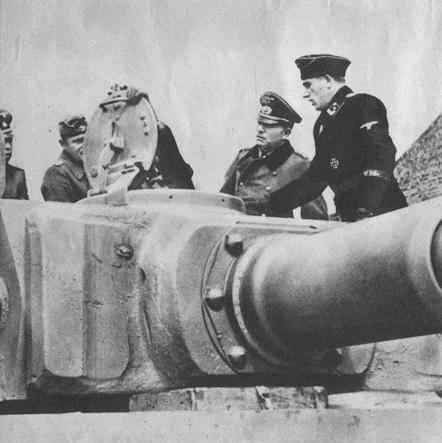
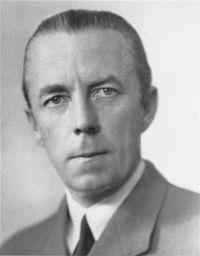
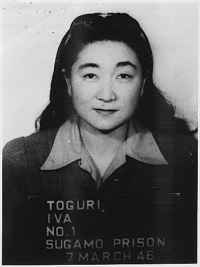
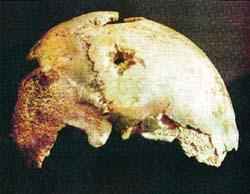
levi.bookin@gmail.com







